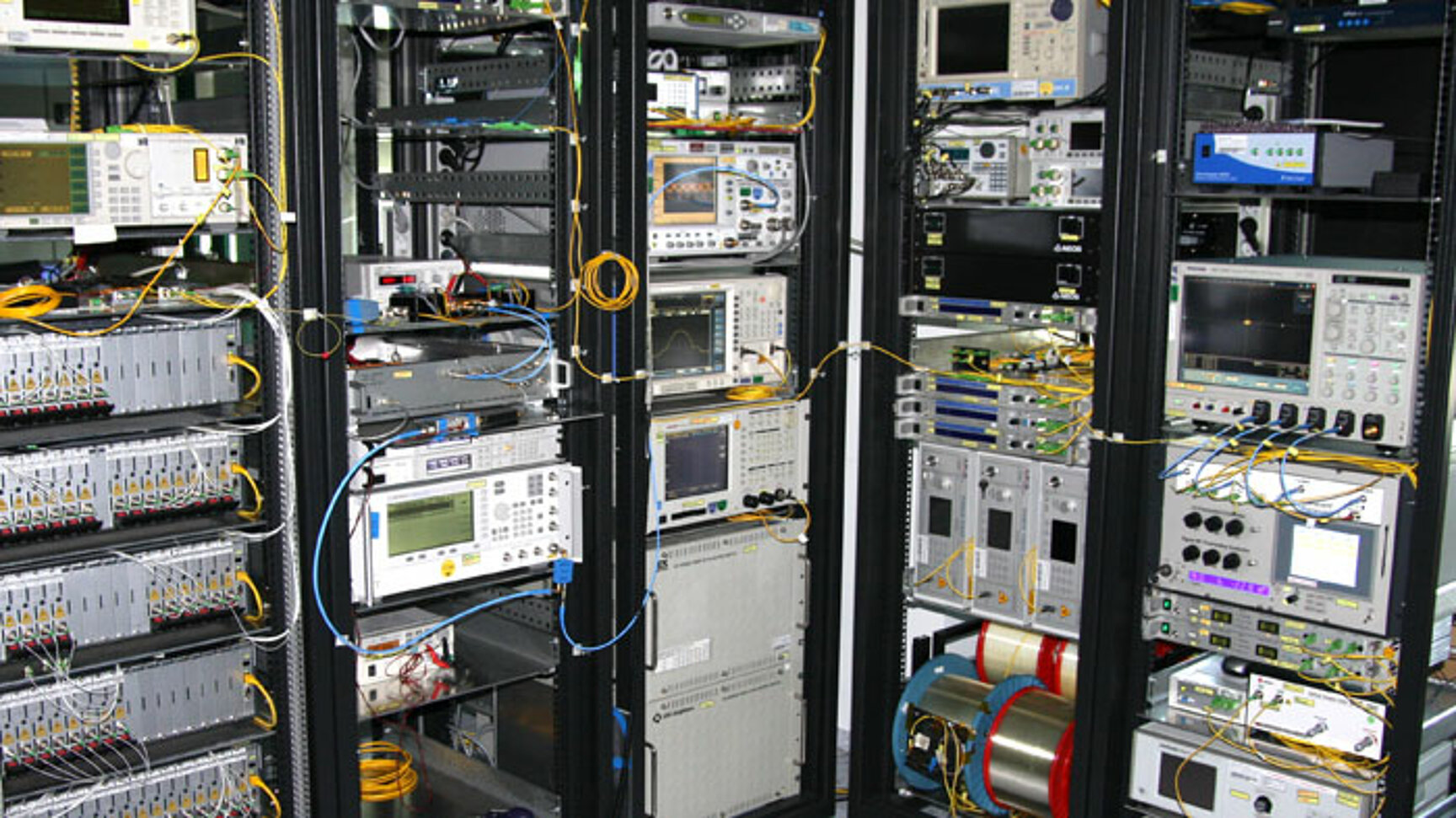
The development of new optical long-haul systems is the key for increasing the capacity of the future internet backbone infrastructure. Primary design goals are the higher flexibility of the systems on the one hand and also the increase of their spectral efficiency on the other.
The core systems testbed allows investigating the performance of such systems in a wide range of different applications. It enables the experimental investigation of long-haul optical transmission systems, including both, directly and coherently detected systems. This also includes the generation and detection of higher order advanced modulation formats such as PDM-16QAM or optimized constellations for the four dimensional space. Further, also advanced multiplexing techniques, like Nyquist WDM or orthogonal frequency-division multiplexing (OFDM), also in combination with a flexible WDM channel spacing, can be investigated. The core systems testbed therefore allows for a detailed analysis of the performance of a particular system scenario under various realistic system and component restrictions.
Featured Measurement Types
- Basic characterization of individual electrical or optical components in a realistic system environment, such as arbitrary waveform generators, dual-polarization I-Q-Modulators, laser sources, fiber-optic parametric amplifiers or coherent receiver modules
- Investigation of different transmitter and receiver options for WDM system configurations using a fixed (50 GHz, 100 GHz) or arbitrary channel spacing
- Test of new DSP algorithms, such as software-based predistortion, in a realistic system scenario
- Linear, back-to-back characterization of individual system approaches using e.g. Nyquist WDM or new advanced modulation formats like such as PDM 16-QAM, 6 PolSK-QPSK
- Performance analysis of complete optical WDM systems in different long-haul transmission scenarios, which include:
- different fiber types (standard single mode fiber (SSMF), ultra large area fiber (ULAF,…)
- different link setups (inline chromatic dispersion (CD) compensated, without optical CD compensation)
- different amplification schemes (erbium doped fiber amplifier (EDFA), Raman amplification)
Building Blocks
Transmitter
- 80 channel WDM laser source
- Arbitrary waveform generators (AWG) up to 65 GS/s
- Various transmitter setups for generation of arbitrary optical modulation formats, such as PDM 16-QAM, PS-QPSK, 6-PolSK-QPSK
- Transmitter DSP (predistortion, Nyquist pulse shaping)
Fiber link, transmission link
- Straight line transmission link up to 1000 km (both, dispersion managed and SSMF only)
- Recirculating fiber loop testbeds using either SSMF or ULAF (both, EDFA or Raman amplification scheme)
- Routing option using multiple programmable wavelength selective switches (WSS) in order to investigate multi-point connection systems or to investigate filtering effects during transmission
Receiver
- Multiple coherent receiver setups
- Multiple digital real-time sampling scopes (up to 80 GS/s and 30 GHz analogue bandwidth)
- Offline Digital signal processing at the receiver
